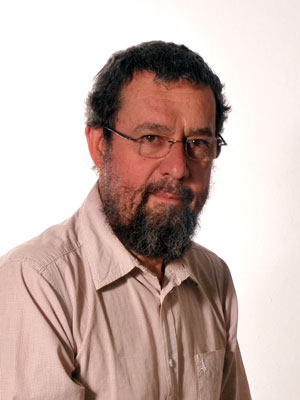Maize forum at El Batán
During 13-14 January, a maize forum was held at CIMMYT-El Batán with participation of principal actors in Mexico’s maize production, marketing, and processing chain, as well as the research sector. This event was one of the training activities carried out by the SAGARPA-CIMMYT maize, wheat, and conservation agriculture research project.
The forum, coordinated by Petr Kosina, knowledge, information, and training manager, and Natalia Palacios, maize nutrition quality expert, brought together more than 40 specialists from each sector, including those from livestock industries. Participants gave a general overview of maize production systems (marginal, intermediate, and commercial), the restrictions they face, and opportunities for improvement.
The use of maize diversity, training, and dissemination of conservation agriculture practices, along with development of drought tolerant and disease resistant maize were some of the topics discussed. To ensure an impact from these technologies, technology transfer programs need to be revised and strengthened, and training and support to farmers needs to be continuously provided, not only in crop management and the use of new germplasm, but also in the area of agribusiness.
“In Mexico we continue to manage maize as a single product, without paying attention to its real importance in the domestic market,” said Raúl Navarro, Director General of Bufete Profesional de Servicios a Agroindustrias, S.A. de C.V. “The farmer needs to be taught to be more business-minded and more aware of what the market requires.”
The industrial sector put forth proposals such as opportunities for producing and marketing yellow and forage maize for the livestock sector, and the development of value-added maize such as certified organic maize and nutritionally enhanced maize. The sector also emphasized the need to think in terms of consumer demand and agreed that one of the biggest restrictions for maize production in the country is access to seed. Public policies and the commitment of actors in the sector need to be revised in order to identify new ways of ensuring seed production and distribution.
“We are aware of CIMMYT’s importance, not only at the national level, but worldwide; therefore, I think the contributions and results coming out of this forum are very relevant and should reach people in both the government and private sectors,” Navarro said.
Conclusions from the forum will be summarized and sent to SAGARPA and forum participants. The four main presentations given were as follows: “Factors affecting sustainable maize production in Mexico,” by Noel Gómez of the Mexican National Institute of Forestry, Agriculture, and Livestock Research (INIFAP); “Opportunities for contract agriculture in maize in Mexico,” by Raúl Navarro; “Factors determining the acceptability of Mexican maize by the livestock sector,” by Rosario Tovar, INIFAP and Navarro; and, “Factors determining the acceptability of Mexican maize by the food industry,” by Guillermo Arteaga, Grupo Maseca.
 Etienne Duveiller is the new associate director of the Global Wheat Program (GWP) as of 01 January 2010. His previous position was GWP principal scientist and head of wheat pathology, to which he will continue to devote 25% of his time. Duveiller has spent more than 25 years in international agriculture, most of which have been with CIMMYT, and specializes in disease resistance, epidemiology, and integrated crop management. He understands national programs and regional offices, as he has been based in Africa, Latin America, and South Asia. Congratulations, Etienne!
Etienne Duveiller is the new associate director of the Global Wheat Program (GWP) as of 01 January 2010. His previous position was GWP principal scientist and head of wheat pathology, to which he will continue to devote 25% of his time. Duveiller has spent more than 25 years in international agriculture, most of which have been with CIMMYT, and specializes in disease resistance, epidemiology, and integrated crop management. He understands national programs and regional offices, as he has been based in Africa, Latin America, and South Asia. Congratulations, Etienne!